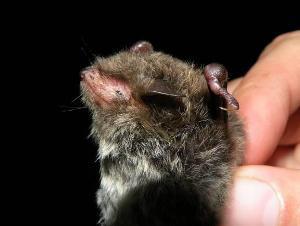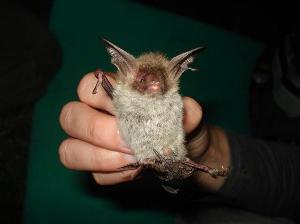Marina Kipson
The project aims to establish monitoring protocols for bats that would provide a baseline for detecting future biodiversity changes along with raising awareness and engaging local community members into monitoring activities.

Daubenton’s bat, ©P.Žvorc.
The research area along Mura and Drava rivers is designated as Regional Park (Croatia and Hungary) and is a part of the world’s first five countries trans-boundary UNESCO Biosphere Reserve. The significance of the region is emphasized by the term "Europe’s Amazon", with many endangered species inhabiting the area and a number of ecosystem services (freshwater, flood protection, timber and fish) provided to the local community. However, unsustainable use of resources and lack of long-term perspective among stakeholders poses a challenge in preserving this region. Some of the threats include old-fashioned water management techniques (habitat alteration through channelling and building of dams), shore destruction through illegal gravel digging, agricultural spill over effect and development. In order to detect environmental and biodiversity changes in the area, continuous monitoring of bioindicators could help in informing decision makers and local community about future actions. Bioindicators are chosen with respect to their ability to reflect changes in community structure of other species. As such, temperate zone bats reflect changes in invertebrate communities they feed upon, they accumulate high levels of toxins from the environment, reflect climatic changes due to their specific microclimatic preferences and indirectly show quality of water and health of forests.

Bechstein’s bat, © M.Kipson.
In order to achieve this, we plan to determine and develop standardised monitoring protocols for bats in the research area. This would serve as a basis for tracking possible changes due to severe anthropogenic pressure. In the course of the project we plan to hold lectures on raising awareness and field research techniques in order to promote, engage and enable community members for future monitoring.
The results of the research will contribute in filling the gaps and informing the national agencies about the future Natura 2000 network and will be useful on international level since the Biosphere Reserve is shared by five European countries (Croatia, Hungary, Slovenia, Serbia and Austria).